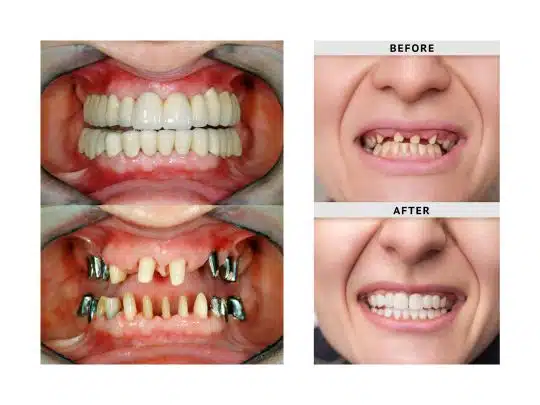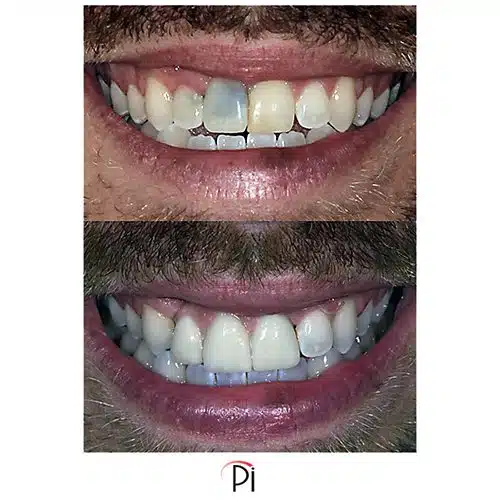Experience the Most Current Innovations in Oral Implants Technology
As the field of dental care continues to progress, the improvements in dental implant technology have actually been absolutely nothing short of amazing. From making use of innovative materials that improve durability to the application of digital imaging for accurate positioning, these advancements are changing the landscape of dental care. With minimally intrusive surgical strategies and the personalization capabilities of 3D printing, individuals now have actually accessibility to customized services that were once unimaginable. The integration of innovation is reinventing the performance of dental implants, assuring enhanced end results and person contentment.
Advanced Materials for Enhanced Durability
In the world of oral implants modern technology, the assimilation of sophisticated products has significantly added to boosting longevity and long life of these vital dental prosthetics. The usage of products such as titanium alloys, zirconia, and ceramic compounds has actually changed the field by supplying increased strength, biocompatibility, and resistance to corrosion.
Titanium alloys are extensively used in dental implants due to their exceptional strength-to-weight proportion, corrosion resistance, and compatibility with the human body. These alloys guarantee the stability and longevity of the dental implant by standing up to the forces exerted throughout chewing and talking, giving a trustworthy service for clients seeking durable tooth substitutes.
Zirconia, a sort of ceramic material, has gotten appeal for its biocompatibility and natural tooth-like appearance. Its high stamina and resistance to wear make it a suitable choice for dental crowns and bridges, improving the general visual appeals and functionality of the dental implant.

Digital Imaging for Accurate Placement
The evolution of dental implants technology has actually additionally advanced with the combination of digital imaging techniques, guaranteeing precise positioning of these prosthetics for optimal functional and visual results. Digital imaging plays an essential duty in the preparation and positioning of dental implants by offering in-depth 3D pictures of the individual's jawbone framework. This technology allows dental professionals to examine bone density, situate essential structures, and plan the exact placement and angle for implant positioning with unmatched accuracy.
By utilizing electronic imaging, dental experts can produce virtual medical overviews that function as a roadmap throughout the dental implant placement procedure. These guides are tailored for each and every individual, thinking about their special anatomy and the wanted result. This level of accuracy not just enhances the success rate of dental implant treatments but additionally lowers the risk of difficulties.
Additionally, electronic imaging makes it possible for dental practitioners to imagine the final prosthetic remediation before the real placement of implants, permitting meticulous planning and ensuring that the end result meets the client's visual assumptions. On the whole, the assimilation of digital imaging modern technology has actually revolutionized the area of oral implants, offering individuals a much more foreseeable, efficient, and patient-specific therapy strategy.

Minimally Invasive Surgical Methods


Developments in medical techniques have caused the advancement of minimally intrusive methods in the area of dental implantology. These techniques intend to reduce trauma to the patient, shorten recovery times, and boost overall therapy results. Minimally intrusive operations include smaller sized cuts, specialized instruments, and advanced imaging innovations to exactly put dental implants with very little disturbance to surrounding cells.
One secret facet of minimally intrusive strategies is using assisted surgical procedure, where 3D imaging and computer-aided design software program are used to prepare the dental implant positioning with wonderful accuracy. This enables a much more foreseeable end result and can often get rid of the requirement for substantial flap surgical procedure.
Moreover, innovations in materials and implant layout have actually likewise added to the success of minimally invasive techniques. Implants with boosted surface residential properties promote quicker osseointegration, reducing the recovery time called for prior to the prosthetic repair can be placed.
3D Printing for Custom-made Solutions
Making use of 3D printing innovation in dental implantology permits the production of highly tailored services tailored to individual client needs and visit the website physiological variants. This advanced technology enables dental professionals to make and produce oral implants with outstanding precision and accuracy. By utilizing electronic imaging techniques, such as cone beam computed tomography (CBCT), detailed 3D models of the person's mouth can be created to direct the dental implant intending procedure.
Among the essential benefits of 3D printing in dental implantology is the capability to create patient-specific implants that perfectly fit the special composition of each individual. This personalized strategy assists improve the general success and durability of the implant by guaranteeing optimal fit and alignment. Furthermore, 3D printing enables the manufacturing of intricate geometries and complex structures that would be tough or impossible to achieve using traditional manufacturing techniques.
In addition, 3D printing modern technology allows dental professionals to simplify the implantation procedure, reducing surgical treatment time and improving overall individual experience. With its capacity to develop customized options swiftly and efficiently, 3D printing is reinventing the field of dental implantology, offering patients innovative treatment alternatives and enhanced end results.
Integrated Technology for Improved Performance
Carrying out cutting-edge technology in oral implantology improves performance and accuracy, elevating the criterion of take care of individuals undergoing implant procedures. Integrated technology plays an essential duty in enhancing the general success and sturdiness of oral implants. One vital improvement is the assimilation of electronic scanning and imaging modern technologies, such as cone-beam calculated tomography (CBCT) and intraoral scanners. These tools enable detailed 3D imaging of the individual's dental structures, facilitating accurate treatment preparation and dental implant placement.
In addition, the combination of computer-aided design and computer-aided production (CAD/CAM) modern technology allows the development of personalized dental implant reconstructions with remarkable accuracy. CAD/CAM systems make use of digital perceptions to design prosthetics that perfectly fit the person's one-of-a-kind anatomy, making certain optimal comfort and capability. In addition, the use of robotic-assisted surgery in implant positioning boosts accuracy and decreases the risk of human mistake.
Final Thought
To conclude, the most recent technologies in oral implants modern technology deal enhanced toughness with sophisticated products, specific placement with digital imaging, minimally intrusive surgical strategies, personalized services with 3D printing, and boosted performance with integrated technology - Dental implants Kent. These my website innovations in dental implants innovation are transforming the area and providing clients with more efficient and effective therapy choices for recovering their smiles and oral wellness
The integration of modern technology is revolutionizing the functionality of dental implants, promising boosted outcomes and patient complete satisfaction.
The development of dental implants modern technology has further progressed with the integration of electronic imaging strategies, ensuring specific positioning of these prosthetics for optimal practical and aesthetic outcomes. Minimally invasive surgical treatments include smaller cuts, specialized tools, and progressed imaging technologies to precisely position dental implants with minimal disruption to bordering tissues.
Implementing cutting-edge technology in oral implantology boosts capability and precision, raising the criterion of treatment for clients undertaking dental implant treatments. Dental implants Kent. Bonuses Integrated technology plays an important function in improving the general success and resilience of dental implants